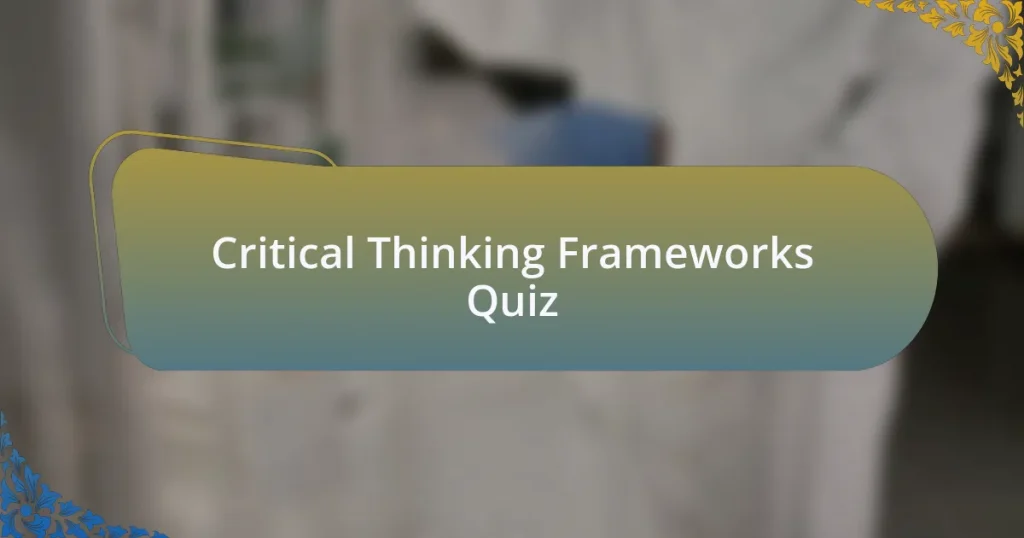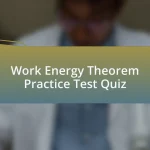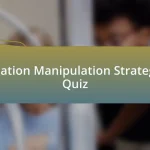Start of Critical Thinking Frameworks Quiz
1. What is mind mapping, and how can it be useful in physics problem-solving?
- Mind mapping is a method to memorize formulas by repeating them multiple times without visual aids.
- Mind mapping is a type of software used exclusively for calculating physics equations without any visual representation.
- Mind mapping involves writing lengthy essays to detail each physics topic thoroughly.
- Mind mapping is a visual technique that helps organize and structure information, enhancing problem-solving in physics by illustrating relationships between concepts.
2. How can the Socratic Method be applied to enhance understanding of physics concepts?
- The Socratic Method enhances understanding by focusing solely on memorization techniques.
- The Socratic Method enhances understanding by encouraging dialogue through questioning.
- The Socratic Method enhances understanding by providing direct answers to questions.
- The Socratic Method enhances understanding through lectures without interaction.
3. What are the benefits of using SWOT analysis in evaluating a physics experiment?
- SWOT analysis is primarily a financial assessment tool for budgeting resources in experiments.
- SWOT analysis is used to measure the chronological timeline of experiment execution.
- SWOT analysis helps identify strengths, weaknesses, opportunities, and threats in evaluating a physics experiment.
- SWOT analysis focuses solely on quantitative data and discards qualitative observations.
4. How does the Paul-Elder Critical Thinking Framework specifically apply to analyzing physics problems?
- The Paul-Elder Critical Thinking Framework emphasizes memorization of formulas and laws without analysis or understanding of their applications in physics problems.
- The Paul-Elder Critical Thinking Framework provides a structured approach to evaluate physics problems by focusing on reasoning elements, applying intellectual standards, and fostering critical traits.
- The Paul-Elder Critical Thinking Framework discourages the consideration of different viewpoints and focuses solely on individual calculations in physics.
- The Paul-Elder Critical Thinking Framework is primarily used for developing computer programming skills, not for analyzing physics problems.
5. In what ways can Bloom`s Taxonomy be used to develop physics curricula?
- Bloom`s Taxonomy focuses exclusively on physical experiments in the laboratory.
- Bloom`s Taxonomy can be used to structure lesson plans, ensuring they address all cognitive levels.
- Bloom`s Taxonomy emphasizes solely memorization without higher-order thinking skills.
- Bloom`s Taxonomy is only applicable for assessing student behavior and attitude.
6. What type of insights does the California Critical Thinking Disposition Inventory provide regarding physics students?
- Insights into critical thinking disposition
- Insights into mathematical skills
- Insights into laboratory techniques
- Insights into physical fitness
7. How can the Ennis-Weir Critical Thinking Essay Test be useful in assessing physics comprehension?
- It tests memorization of physics formulas and definitions.
- It evaluates numerical problem-solving skills in physics contexts.
- It assesses a person`s ability to appraise arguments and formulate written responses.
- It measures aptitude in laboratory experiments related to physics.
8. How does the Socratic Method aid in fostering scientific inquiry in physics?
- The Socratic Method relies solely on lectures and standardized tests to assess understanding in physics.
- The Socratic Method dismisses the importance of practical experiments in physics education.
- The Socratic Method teaches physics concepts through rote memorization without encouraging inquiry.
- The Socratic Method encourages deep questioning and dialogue, prompting students to explore fundamental concepts in physics.
9. What steps are involved in using the 9-step critical thinking framework to solve a physics challenge?
- Identify the problem, explore solutions, analyze reasoning, role-play outcomes, and reflect.
- Recall facts, read the text, answer multiple-choice questions, write notes, and review concepts.
- List all variables, derive conclusions, perform calculations, summarize results, and present findings.
- Memorize key equations, solve step-by-step, apply formulas, check answers, and repeat.
10. How might the four levels of scaffolding in the 9-step framework be applied to physics test prep?
- The four levels of scaffolding simplify classroom seating arrangements for physics labs.
- The four levels of scaffolding can be applied by differentiating levels of content complexity in physics prep.
- The four levels of scaffolding help determine testing formats for multiple-choice questions.
- The four levels of scaffolding are used exclusively for group projects in physics.
11. In what specific manner does Level 1 of the 9-step framework facilitate physics learning?
- Level 1 focuses solely on multiple-choice questions for assessment.
- Level 1 encourages memorization of facts and figures without context.
- Level 1 allows students to work independently without any direction.
- Level 1 provides comprehensive guidance with structured prompts to deepen understanding.
12. What are the main features of Level 2 of the 9-step critical thinking framework in the context of physics?
- Level 2 includes identifying the problem and exploring solutions.
- Level 2 includes only analyzing reasoning and reflecting on outcomes.
- Level 2 includes asking why prompts throughout the process.
- Level 2 includes creating new theories without analysis.
13. What key elements does Level 3 of the 9-step framework emphasize for physics problem-solving?
- Defining variables, solving equations, simplifying solutions, confirming results, generating hypotheses, and concluding findings.
- Stating the question, gathering data, deriving formulas, applying theories, calculating results, and explaining findings.
- Identifying the key question, brainstorming possible explanations, analyzing evidence, pinpointing limitations, proposing a final solution, and reflecting on the process.
- Identifying the problem, proposing multiple solutions, evaluating outcomes, brainstorming limitations, determining evidence, and reflecting on the process.
14. How does Level 4 of the 9-step critical thinking framework streamline physics learning activities?
- Level 4 provides a concise framework for quick assessments of physics problems.
- Level 4 complicates the analysis of physics concepts through added steps.
- Level 4 expands on complex theories in physics learning activities.
- Level 4 replaces the need for foundational physics principles in learning.
15. Why is Clarity crucial in articulating physics theories and experiments?
- Clarity ensures that the theories and experiments are understood without confusion.
- Clarity hinders engagement with challenging physics topics.
- Clarity complicates the presentation of physics concepts and theories.
- Clarity is unimportant when sharing complex ideas in physics.
16. How do Precision and Accuracy play a role in conducting physics experiments?
- Precision relates to the appearance of data, while accuracy determines its complexity.
- Precision ensures measurements are consistent, while accuracy ensures they are correct.
- Precision ensures measurements are accurate, while accuracy ensures they are consistent.
- Precision improves the speed of experiments, while accuracy increases the time taken.
17. What intellectual traits are particularly important for aspiring physicists according to the Paul-Elder Framework?
- Intellectual Humility, Intellectual Courage, Intellectual Empathy, Intellectual Autonomy
- Creative Imagination, Artistic Sensitivity, Social Awareness
- Mathematical Precision, Analytical Rigidity, Empirical Certainty
- Strategic Planning, Organizational Skills, Leadership Qualities
18. How does the systematic use of questioning in physics enhance problem-solving skills?
- It discourages questioning and inquiry.
- It encourages deep analysis and understanding of problems.
- It limits exploration of ideas and concepts.
- It promotes memorization of facts and formulas.
19. How is SWOT analysis strategically utilized to improve physics education?
- SWOT analysis is solely about understanding student preferences and adjusting schedules.
- SWOT analysis improves physics education by evaluating strengths and weaknesses while identifying opportunities and threats to enhance learning methods.
- SWOT analysis compares physics education to other unrelated subjects for curriculum decisions.
- SWOT analysis determines the popularity of physics topics based on social media trends.
20. What techniques in mind mapping can help students revise for physics exams?
- Writing linear notes without diagrams
- Memorizing textbook chapters verbatim
- Relying solely on lecture slides
- Using colors and symbols to enhance visual appeal
21. How can intellectual humility improve collaboration among physics students?
- It encourages rigid thinking, which limits the exchange of ideas.
- It discourages questioning, leading to less interaction among students.
- It fosters open dialogue, allowing students to express and consider diverse viewpoints.
- It promotes competition among students, reducing teamwork efforts.
22. What importance does Fairness hold in evaluating physics-related arguments or data?
- Fairness requires ignoring opposing viewpoints to maintain focus.
- Fairness means selecting evidence that solely supports one`s view.
- Fairness ensures justifiable reasoning by considering multiple perspectives.
- Fairness promotes conformity to popular opinion in arguments.
23. How can intellectual empathy benefit discussions in physics classrooms?
- It fosters mutual understanding and encourages collaboration.
- It promotes rote memorization of concepts.
- It obstructs differing viewpoints and discussions.
- It leads to competition among students.
24. What role does logic play in deriving equations in physics?
- Logic is irrelevant in deriving equations as physics relies solely on experimental data.
- Logic is fundamental in deriving equations by ensuring the derivations follow a coherent reasoning process.
- Logic plays a minimal role since intuition is the main driver in physics.
- Logic complicates the equation derivation process and should be avoided.
25. How can the 9-step critical thinking framework be customized for different physics learners?
- It cannot be customized and is the same for all learners regardless of their background.
- The framework must be taught in a fixed manner with no flexibility for individual learners.
- Customization involves only changing the number of steps in the framework.
- The 9-step critical thinking framework can be customized by defining specific tasks and concepts relevant to each learner`s needs.
26. How can the promotion of intellectual courage benefit physics research efforts?
- Intellectual courage allows scientists to question established theories and pursue novel ideas.
- Intellectual courage ensures all research is flawless and without error.
- Intellectual courage eliminates the need for peer review and critique.
- Intellectual courage leads to more funding and resources for research.
27. In what ways does measuring confidence in reason relate to student success in physics?
- Confidence in reason leads to memorizing formulas without understanding.
- Confidence in reason reduces the need for practice and application.
- Confidence in reason is unrelated to student engagement in physics.
- Confidence in reason fosters resilience and problem-solving skills in physics students.
28. How does the framework assess data usage during physics experiments?
- The framework assumes all data is irrelevant to physics experiments.
- The framework only assesses the quantity of data used in experiments.
- The framework ignores data usage entirely during experiments.
- The framework evaluates how effectively data is utilized to support experimental conclusions.
29. What significance does Depth have in formulating physics hypotheses?
- Depth is irrelevant in formulating any scientific hypothesis.
- Depth is crucial for establishing the thoroughness and complexity of a hypothesis.
- Depth only affects the size and shape of physical objects.
- Depth determines the color and brightness of a physical experiment.
30. How do the traits of intellectual integrity and ethical reasoning apply in physics research?
- Intellectual integrity is irrelevant in physics research, and ethical reasoning is only important in philosophy.
- Intellectual integrity is about personal beliefs, and ethical reasoning is not applied in scientific experiments.
- Ethical reasoning has no impact on the interpretation of data, while intellectual integrity is only about publishing.
- Intellectual integrity ensures honesty in research practices, while ethical reasoning guides decision-making in experimental design.
Quiz Completed: Congratulations!
Well done on completing the quiz on Critical Thinking Frameworks! Engaging with this material is crucial for your Physics Test Preparation. You’ve likely sharpened your analytical skills and gained insight into how critical thinking enhances your problem-solving abilities in physics. Understanding these frameworks can help you approach complex problems with greater clarity and efficiency.
Throughout the quiz, you may have discovered how different frameworks guide your thought process. You learned how to evaluate arguments, identify assumptions, and weigh evidence. These skills are invaluable as you tackle challenging physics concepts and scenarios. Remember, a strong foundation in critical thinking will not only aid you in exams but also in applying physics principles to real-world situations.
We invite you to explore the next section on this page, where you can find more detailed information about Critical Thinking Frameworks. This additional content will expand your knowledge and further enhance your test preparation. Dive in and continue your journey toward mastering physics with confidence!
Critical Thinking Frameworks
Understanding Critical Thinking Frameworks
Critical thinking frameworks provide structured approaches for analyzing and evaluating information. These frameworks help individuals make reasoned judgments and decisions. In physics test preparation, a critical thinking framework assists students in deconstructing complex problems. By applying systematic thinking, students identify assumptions, argument strengths, and various solution paths. This process enhances overall analytical skills essential for mastering physics concepts.
Application of Critical Thinking in Physics Problems
The application of critical thinking involves using frameworks to solve physics problems. Students break down problems into smaller, manageable parts. They assess given information and identify relevant physics principles. This approach encourages deeper understanding and analysis of problems, leading to more accurate solutions. Moreover, comparing different problem-solving strategies fosters adaptability and creativity in approaching physics challenges.
Common Critical Thinking Frameworks Used in Education
Several critical thinking frameworks are commonly utilized in educational settings. The Paul-Elder framework, for instance, emphasizes clarity, accuracy, relevance, and depth in thinking. In physics, such frameworks encourage students to question assumptions and seek evidence in their problem-solving processes. Using these frameworks also promotes collaborative discussions that strengthen reasoning skills among peers. These elements are crucial for tackling complex subjects in physics effectively.
Integrating Critical Thinking Skills into Physics Test Preparation
Integrating critical thinking skills into physics test preparation involves targeted practice. Educators can create assessments that require students to apply critical frameworks. Such assessments challenge students to formulate hypotheses, analyze results, and draw conclusions based on evidence. This integration reinforces comprehension of physics concepts while promoting analytical thinking needed for high-stakes testing situations.
Evaluating Outcomes of Critical Thinking in Physics Tests
Evaluating outcomes of critical thinking in physics tests involves analyzing student performance. Metrics may include problem-solving efficiency, accuracy of solutions, and overall test scores. Successful implementation of critical frameworks often correlates with improved student results. Furthermore, feedback from assessments allows educators to refine teaching approaches. This ongoing assessment creates a feedback loop that enhances critical thinking practices over time.
What are Critical Thinking Frameworks in Physics Test Preparation?
Critical thinking frameworks in physics test preparation refer to structured approaches that guide students in analyzing, evaluating, and applying physics concepts effectively. These frameworks help in breaking down complex problems into manageable parts, enhancing understanding and retention. For instance, the Paul-Elder Critical Thinking Framework emphasizes elements like purpose, assumptions, and implications in problem-solving, which is crucial for mastering physics concepts and making informed decisions during tests.
How do Critical Thinking Frameworks enhance Physics Test Performance?
Critical thinking frameworks enhance physics test performance by providing strategies that facilitate deeper comprehension and problem-solving skills. By employing these frameworks, students learn to assess their reasoning, identify flaws, and improve their approach to questions. A study published in the “Journal of Physics Education Research” indicates that students using structured critical thinking methods demonstrate higher test scores compared to those who do not.
Where can one find resources for Critical Thinking Frameworks in Physics?
Resources for Critical Thinking Frameworks in Physics can be found in educational websites, academic journals, and physics textbook supplements. Institutions like the American Association of Physics Teachers (AAPT) provide guides and workshops focusing on critical thinking in physics education. Additionally, online platforms such as Khan Academy and Coursera offer courses that integrate critical thinking frameworks into their physics curricula.
When should students apply Critical Thinking Frameworks during Physics Test Preparation?
Students should apply critical thinking frameworks throughout their physics test preparation, particularly during problem-solving sessions and practice tests. Implementing these frameworks early in the study process allows for the development of critical skills required for analysis and evaluation. Research shows that consistent application enhances long-term retention of material, resulting in improved performance during actual exams.
Who can benefit from using Critical Thinking Frameworks in Physics Test Preparation?
High school and college students preparing for physics tests can benefit significantly from using critical thinking frameworks. Educators also gain from these frameworks as they enhance teaching methods and improve student understanding. According to the National Science Foundation, students who engage in critical thinking activities perform better academically, indicating widespread benefits across different educational levels.















